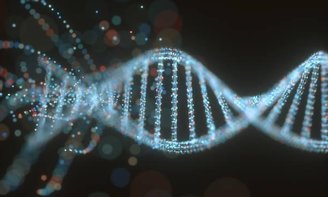If we could travel back just over 4 billion years, this would be a question easily answered by analyzing the matter that created life on Earth. Viruses, bacteria, advanced cells, what do we find in the primitive soup?
There is another way to learn about our past. Maybe somewhere in the universe, far enough away, another life form is watching the creation of the Solar System from a box and has the answer to give us. But science has its limits, and we are limited to our young and mysterious planet.
In our existential microcosm, questions of “who came first” preoccupy us. Being able to answer these allows us to be more assertive in the retrospective creation journey and to make the answers to how we emerged and how we developed more concrete.
Since everything has a beginning, let’s first ask ourselves this question: Which came first, virus or bacteria? Already have a guess?
Once upon a time, 4 billion years ago…
As primitive elements mixed, cooled, rearranged, merged and disconnected, some clusters gradually began to systematically come together and form sequential chains.
These first simple chains led to the emergence of what we today call RNA (Ribonucleic Acid). Over time, these chains came together and changed again, forming double-stranded chains called DNA (Deoxyribonucleic Acid).

From this formation of DNA, life began to show signs of existence, and the first cells, although their nuclei were removed, began to have the capacity to reproduce by storing the recipe in DNA sequences. And then the deadlocks begin.
For some, bacteria came first, as viruses are not considered “living beings” and require a host to multiply. Viruses store their information in RNA strands that, when in contact with the DNA of invaded cells, stimulate the copying of the information and thus replicate..

But, The fact that bacteria could not multiply before their existence does not mean that they appeared later.. And in this latter case, some research explains that bacteria form in areas where viruses already live. So their “emergence” only contributed to the increase in the virus population.
But there is a third hypothesis: They were both born together from a common cell body. But while bacteria evolved into complex, active organisms capable of self-replication, viruses freed themselves from this “evolution” and retained the ability to store their genetic data only in simple RNA sequences.

The discovery of larger and more complex viruses led to the theory that they simplified over millennia to the form we know today.
All these theories are based on valid principles and observations, but when we talk about these living and non-living beings, it is not possible to do long-term retrospective studies on their lineage.
Viruses and bacteria mutate quite frequently. These successive changes cause the genetic tree of these organisms to be “erased”, so that it is not possible to identify the primitive ancestor of these cell bodies.
Looking back to the past and looking to the future with hope
Although it may seem like a waste of time to ask and investigate who came first, This is an important study that will help us understand how life occurs on Earth and what factors intervene in the formation of basic structures in this way..
It may seem strange, but seasonal viruses aren’t the only ones living in your body. We are all colonized by these entities, viruses and bacteria, that contribute to our health by regulating different systems, such as the intestinal tract.

Studying the behavior, evolution, reproduction and death mechanisms of these creatures helps fight epidemics and diseases faster and more effectively.
Moreover, looking outside our tiny planet, understanding the first traces of life there, could give us clues about what to look for outside, in other systems, for signs of water and organisms with the potential for life beyond Earth.
There’s still no concrete answer as to who came first, but we do know the outcome at least partially. The story of life emerging microscopically and populating the entire planet.
If you want to learn more about how viruses and bacteria can help solve mysteries about the origin of life, feel free to become a Junior Researcher.
Source: Tec Mundo
I’m Blaine Morgan, an experienced journalist and writer with over 8 years of experience in the tech industry. My expertise lies in writing about technology news and trends, covering everything from cutting-edge gadgets to emerging software developments. I’ve written for several leading publications including Gadget Onus where I am an author.












